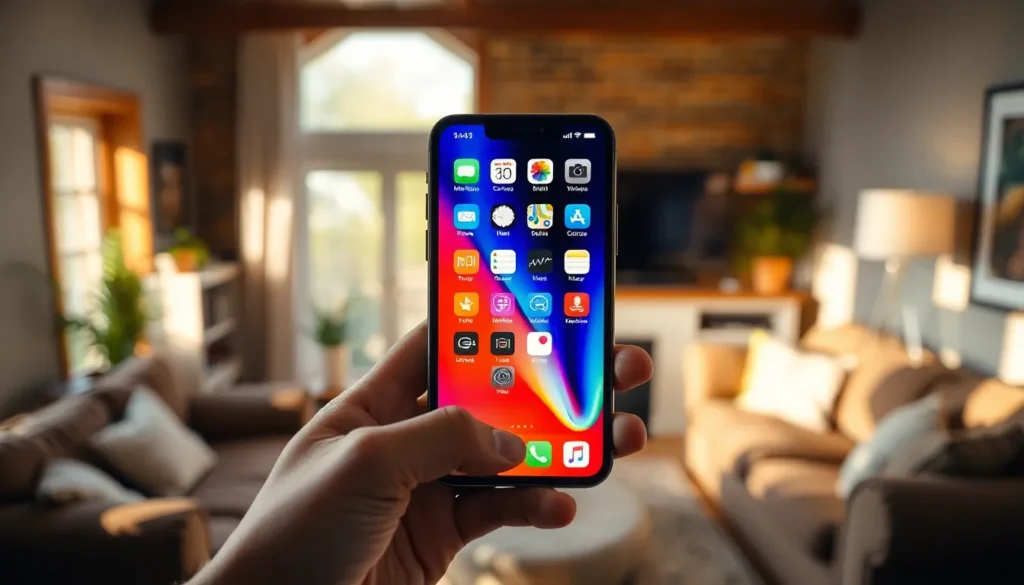Table of Contents
ToggleEver wondered what happens when a blocked number tries to text you on your iPhone? It’s like a secret agent attempting to send you a message from the shadows—mysterious and a little bit thrilling. You might think you’re safe from unwanted texts, but what if those pesky messages are still lurking in the digital underworld?
Understanding Blocked Numbers on iPhone
When blocked numbers attempt to send texts, those messages do not reach the user’s device. The sender receives no indication that the message has been blocked. Users benefit from a sense of security, as unwanted communications cease.
What Happens When You Block a Number?
Blocking a number initiates a straightforward process. Texts and calls from the blocked number get effectively denied by the iPhone. Users experience a seamless interface since their device omits notifications or alerts from blocked contacts. Mentally, this provides reassurance that unwanted correspondence remains absent. This streamlined experience contributes to better focus and fewer distractions.
The Mechanics of Text Messaging
Text messaging relies on a series of steps to deliver messages. Messages travel through cellular networks or Wi-Fi from one device to another. When a message is sent to a blocked number, the iPhone intercepts the signal, preventing it from reaching the intended recipient. Third-party apps or services may offer alternative communication channels but won’t override the block. Understanding this procedure clarifies how blocking ensures peace of mind by safeguarding against unwanted texts.
Checking for Messages from Blocked Numbers

iPhone users often wonder about messages from blocked numbers. Understanding how to check for these texts provides clarity in communication management.
Native iPhone Features
iPhones do not alert users about messages from blocked numbers. The system prevents those messages from appearing in the Messages app. Users gain complete silence regarding these communications. Notifications for blocked contacts vanish entirely, ensuring no distractions from unwanted texts. Reviewing the message history will not reveal any logs of blocked contacts. iOS maintains this level of privacy, offering users a seamless experience when managing their conversations.
Using Third-Party Apps
Some third-party apps offer additional insights into blocked communications. These applications can track and log messages send attempts from blocked numbers. Features such as notification settings enable users to receive alerts about blocked text attempts, though they vary by app. Some apps focus on spam detection while others provide comprehensive monitoring solutions. Users can explore options in the App Store to find tools that meet their needs for tracking unwanted messages. Understanding the capabilities of third-party solutions empowers users to better control their messaging experiences.
How to Unblock a Number Temporarily
Unblocking a number on an iPhone is a simple process. Users can easily manage their settings to reconnect with certain contacts.
Step-by-Step Guide
- Open the Settings app on the iPhone.
- Scroll down and tap on Phone.
- Select Blocked Contacts to view the list.
- Tap Edit in the top right corner.
- Find the number to unblock, then tap the red minus icon next to it.
- Confirm by tapping Unblock.
These steps bring the blocked contact back into the fold, allowing communication to resume.
What to Expect After Unblocking
After unblocking, messages from that contact can flow freely. Users receive notifications for incoming texts and calls, just like any other contact. Past messages not sent during the block will remain inaccessible. The contact’s previous history won’t become visible upon unblocking. The unexpected resumption of notifications might feel overwhelming, so users should be cautious if they had previously aimed to avoid messages from that number.
Privacy Considerations
Privacy plays a significant role when dealing with blocked communications on iPhones. Users prioritize safeguarding their personal data from unwanted interactions, ensuring a secure messaging environment.
Impact on Personal Data
Blocking a number prevents messages from being saved or logged, keeping personal data private. Messages sent by blocked contacts vanish without a trace, ensuring the user maintains control over what information appears on their device. Users remain unaware of any attempted communications, so there’s little risk of unintentional exposure to unwanted content. Various third-party applications can help users monitor these interactions, but they may require access to additional personal data, raising concerns about privacy. Users should weigh the benefits of tracking blocked attempts against potential privacy risks.
Security Implications
Blocking a number enhances security by eliminating unwanted communications that may present risks. Cyber harassment lessens when numbers are blocked, contributing to a safer user experience. Users face fewer scams and unsolicited marketing messages, leading to a more secure messaging environment. While blocked numbers cannot send texts, awareness remains crucial; characters may attempt to contact users through different channels. Staying informed about new threats helps users maintain optimal security while navigating communication apps. Employing two-factor authentication or other security measures can further bolster protection against potential breaches.
Blocking a number on an iPhone offers users a sense of security and peace of mind. While blocked contacts can’t send messages that reach the device, users can still choose to monitor their interactions using third-party apps if they wish. These tools can provide insights into any attempts to communicate, allowing for better management of unwanted messages.
The ability to temporarily unblock contacts ensures that users have control over their communication preferences. With privacy and security at the forefront, iPhone users can confidently navigate their messaging landscape, minimizing distractions and enhancing their overall experience.







